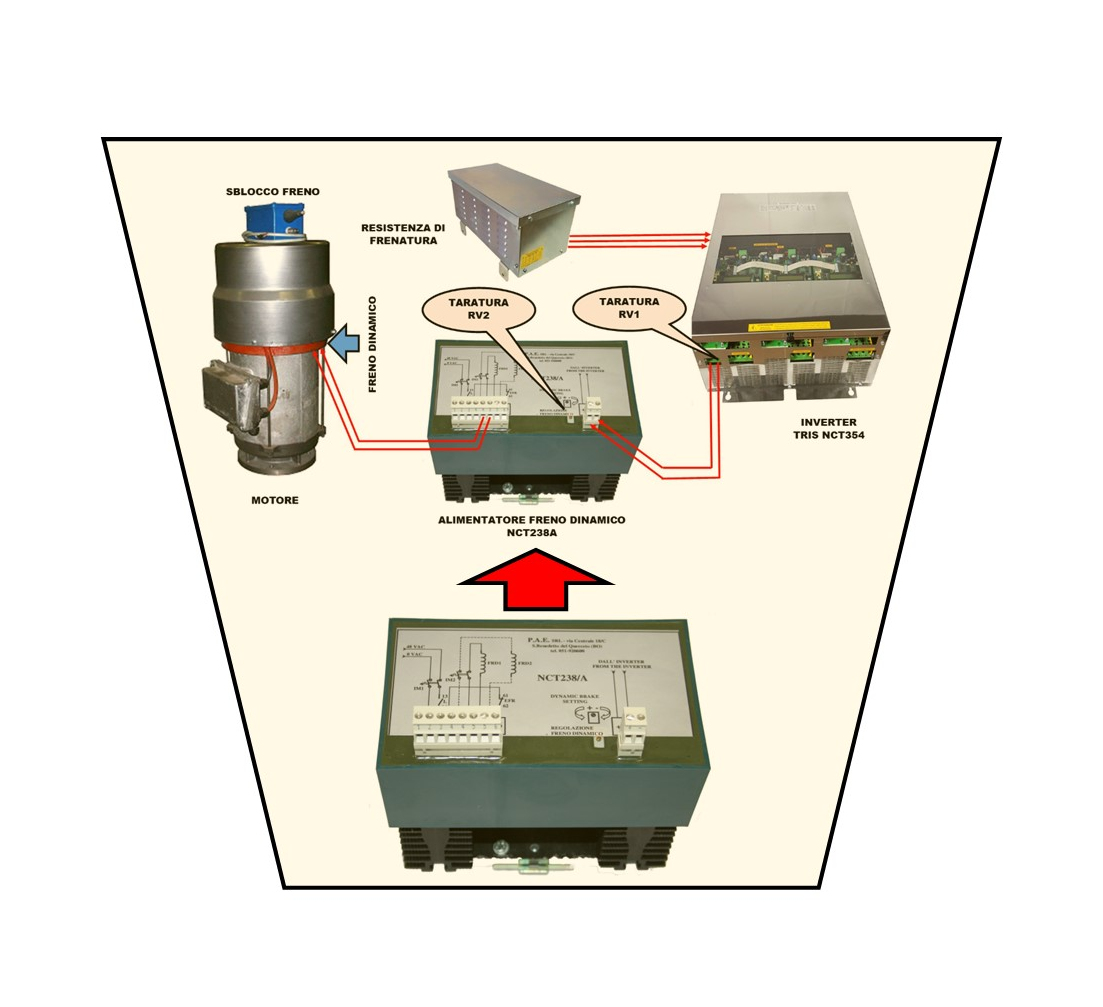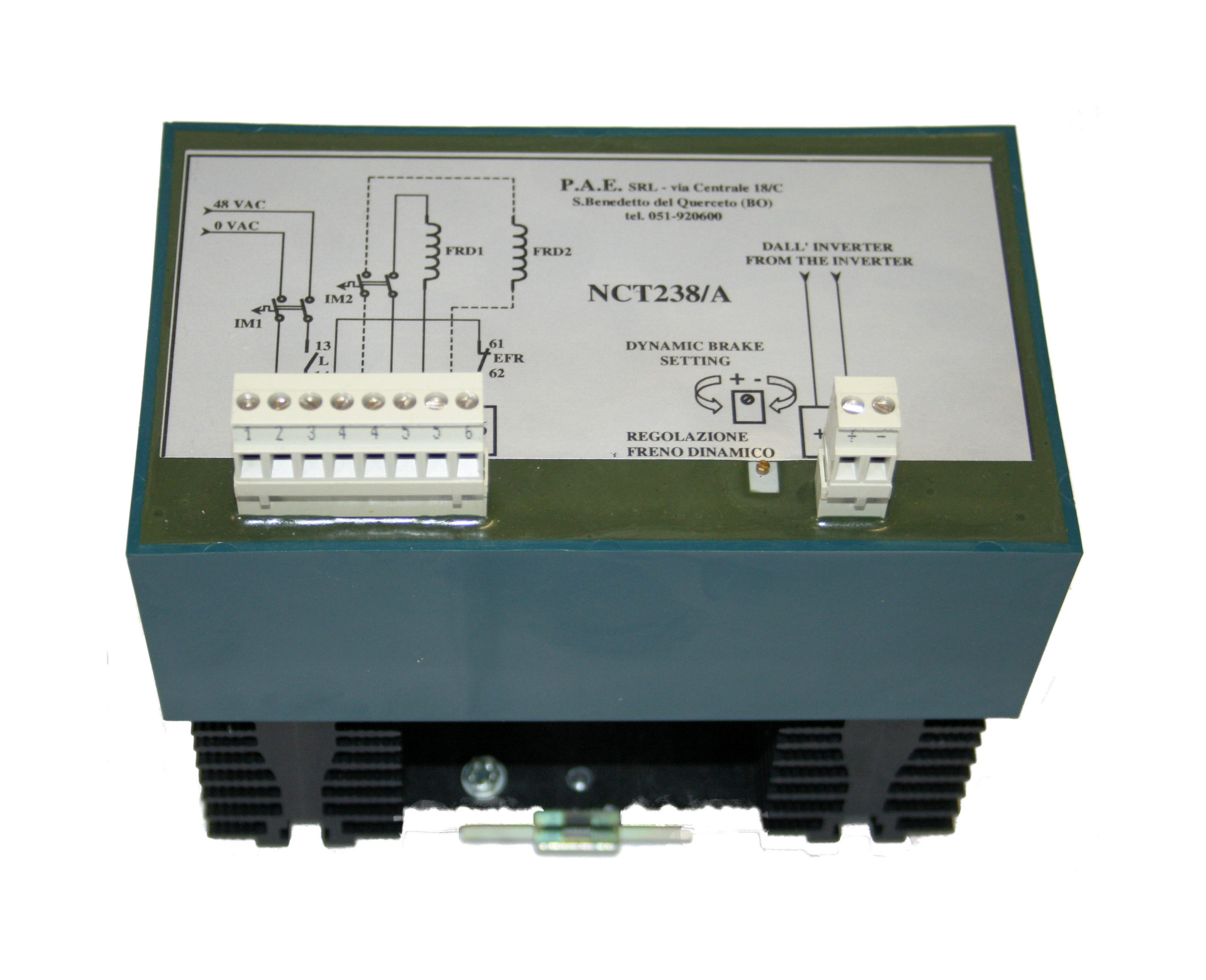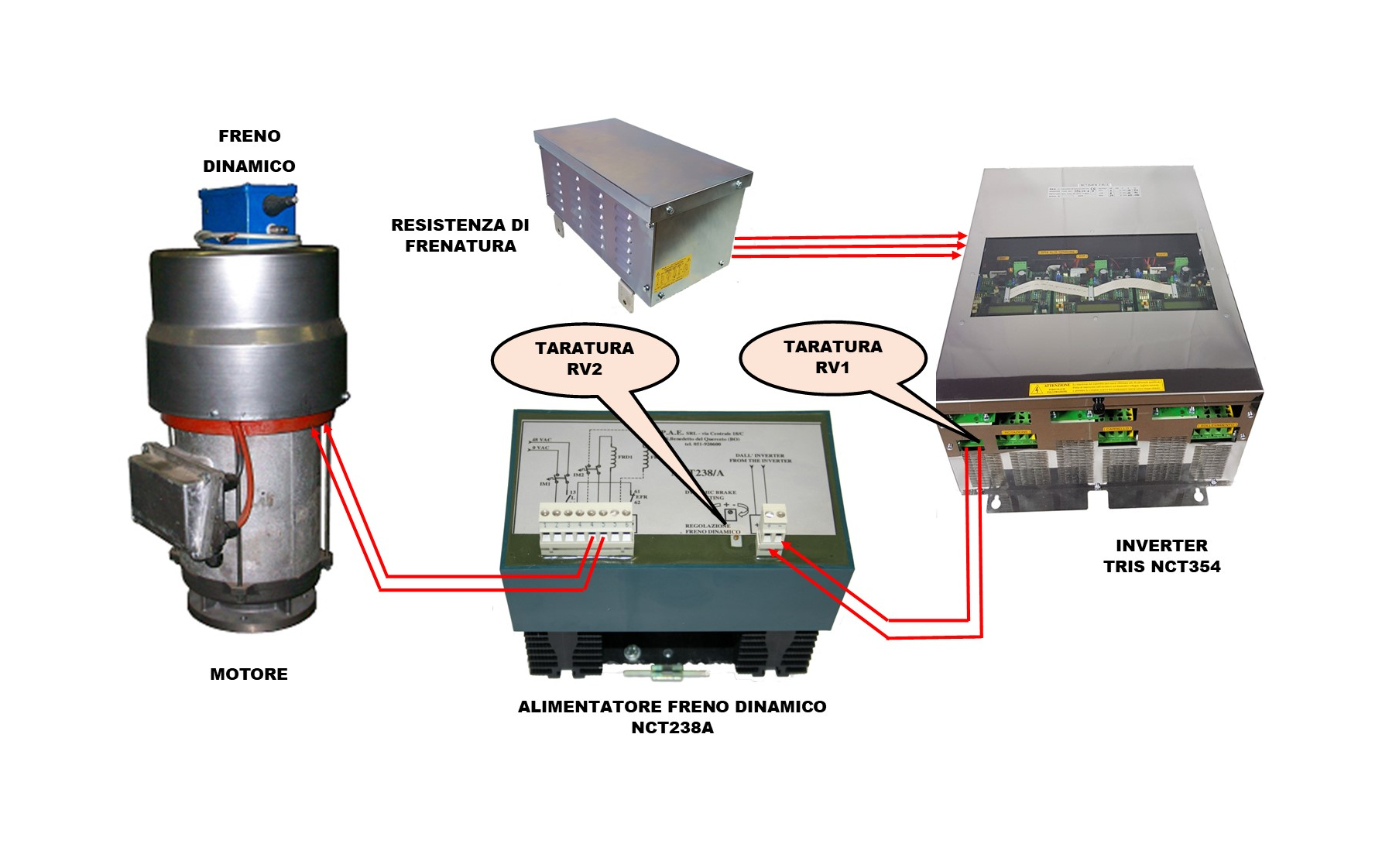The DYNAMIC BRAKE is one of the longest-lived devices in PAE history.
This control, unique of its kind, allows to absorb in real time all the variations in inertia originating from the moving mass regardless of the position of the load and the wind, allowing maneuvers with great positioning precision of the arm even in very heavy working conditions.
The DYNAMIC BRAKE was designed by PAE to control the rotation movement of medium and large cranes. It is accurate and reliable.
Only three components are required.
- A PAE INVERTER in the various sizes available such as Single, Bis or Tris.
- An electronic FEEDER named NCT238A, controlled by the Inverter.
- A specific ENGINE equipped with an electrodynamic braking device.
The dynamic brake intervenes where the rotation movement of the crane is varied by external influences which tend to increase the rotation speed adding up to the thrust of the engine. Where, on the contrary, external influences tend to naturally slow down the rotation motion, the brake does not intervene.
The most common external influence is the wind. During construction site work, the wind, especially when its speed is highly variable such as classic gusts of wind, can create many problems for crane maneuvers especially if precision positioning is required. During the rotation the boom and the load of the crane continuously change their position with respect to the wind direction. This leads to a continuous variation of the wind leverage. If not controlled, the rotational speed changes continuously. The load loses stability, the work becomes difficult and even impossible to perform. Similarly, the load during motion can also be unstable due to inertia.
The dynamic brake intervenes automatically to dynamically contrast the inertial lever, leading to a stabilization of the rotation motion even in the presence of particularly insistent and strong mechanical influences. The dynamic brake intervenes by absorbing in real time the variations in inertia originating from the moving mass, regardless of the position of the load and external influences such as, for example, the wind.



Reviews
There are no reviews yet.